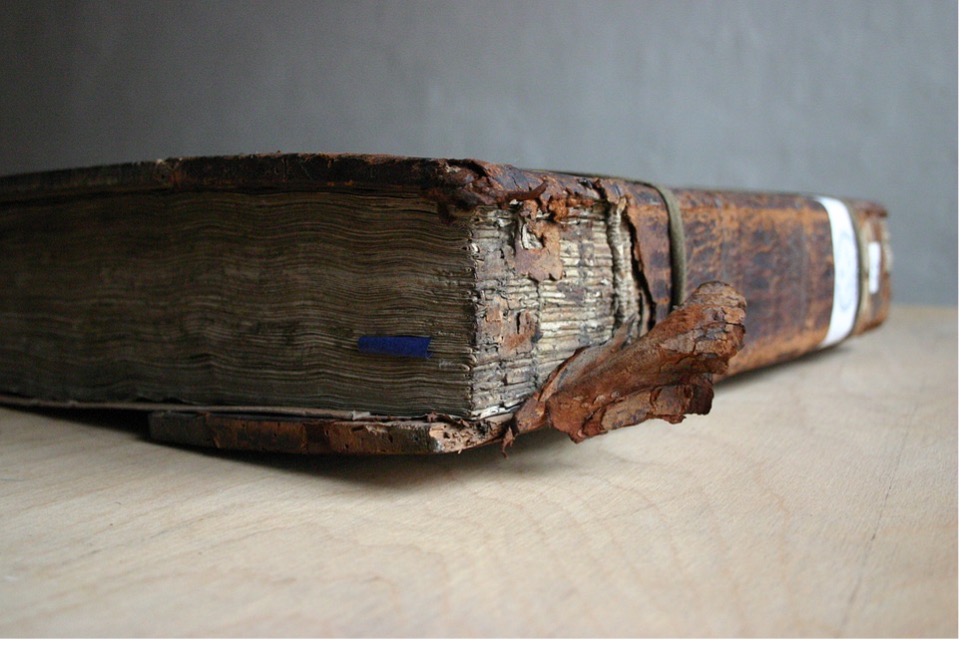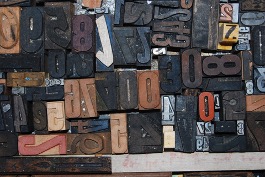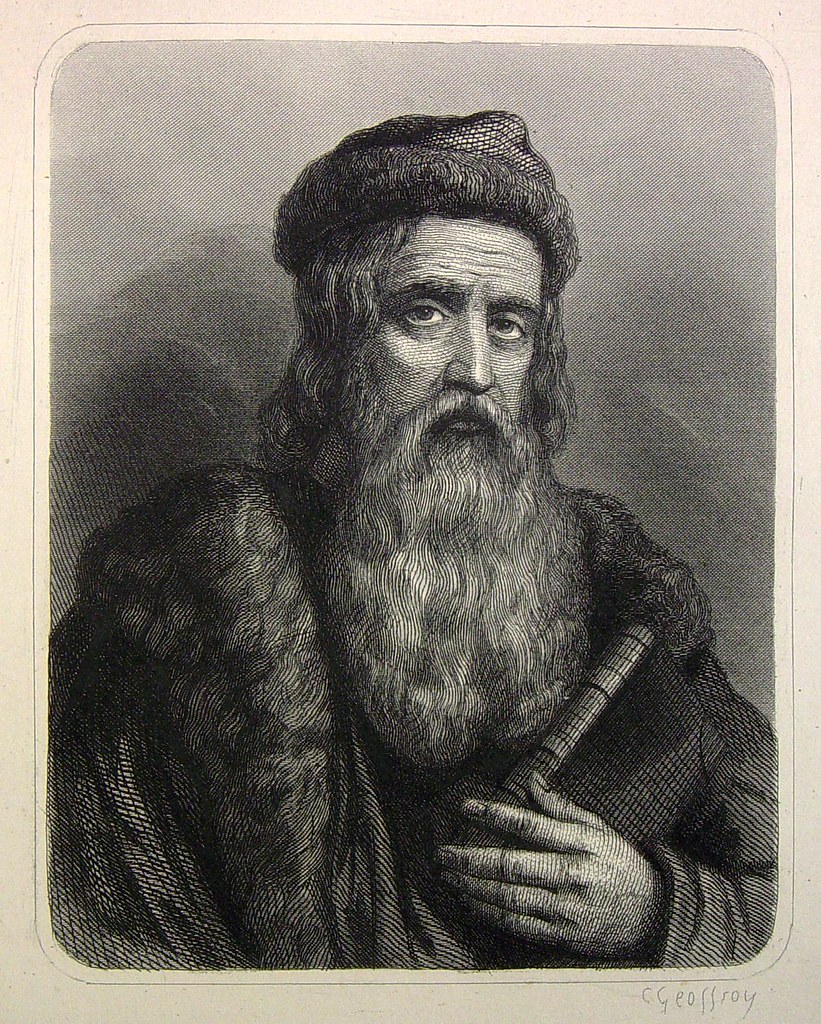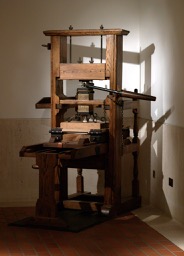Inspiration struck a young inventor in the city of Mainz by just a couple of playing cards. Johannes Gutenberg was playing cards with his family when he knew that he wanted to create something that would change the world. The idea popped into his head when he examined the details on these hand-painted playing cards. Johannes could not fathom how long it must have taken to create such intricate designs. But he planned to revolutionize their production with a new way of creating them. These playing cards were popular, common, and affordable. However, making playing cards was a very time-consuming process. If his plan for revolutionizing card production paid off, Gutenberg had other such labor-intensive productions to revolutionize.

As a young child, Johannes Gutenberg was inspired by great books, which shaped him into the person he would become. His imagination was very vivid. He would use pieces of literature to create the story and bring it to life in his own mind. Johannes’s passion started when he saw art pieces in literary works, which led him to start his journey in mechanical studies. Having these passions, he was able to become a German craftsman and inventor. He envisioned a new way of printing as a substitute for handmaking designs and thereby minimize the time and effort it took to produce these cards. He used his mechanical studies and his love for literature to revolutionize the production of text.
Johannes Gutenberg wanted to print text on a variety of surfaces: paper, wood, tile, and brick. To make a machine that could do that, he needed financing for his project. He met his fiancé, Anna von Isernen Thür.1 Coming from a wealthy family, she had money to invest in his idea of making a printing device that would ultimately give him the means to support his family. Along with the funding from his fiancé, he also obtained financial support from an investor named Johann Fust in the year 1452.2 Fust saw a good idea in Gutenberg’s printing press. Gutenberg’s idea to produce prints was inspired by the hand-made prints commonly seen at the time. When these prints had been on tile or brick, the images had been impressed with a stamp while in a soft state, and when they were on shells and stone, they were etched onto the surfaces.3 Gutenberg wanted to find a way to mass-produce printed books based on a new way of imprinting on paper, not by hand, but by machine.
Gutenberg made several discoveries as he created his printing press. The main innovation he made was in the use of movable type.4 Movable type is the technique of putting together thousands of individual letters to make the words and sentences of a text.5 The printing press itself was a machine with a metal frame holding the moveable type. The type would receive ink by a roller, and then, with applied pressure, the ink would be imprinted onto a medium of paper or cloth. Using this process, Gutenberg would press the paper onto the inked type and thereby create a typed page. This process was repeated for as many pages as he might want to create. When all of the pages of a long text were printed, the separate pages would then be sewn together, creating a printed book. Hundreds or even thousands of the same book could be made all at once. This was the revolution in printing that was Gutenberg’s idea. Gutenberg’s first printed book was a Bible, which has become known as the “Gutenberg Bible.”6

Thus, the Gutenberg Bible became the first mass-produced book in history. Had Gutenberg not developed the printing press, we might have been hand-writing texts for centuries to come. The paper used to produce the Gutenberg Bible had to be inexpensive, but able to hold ink that was pressed on it. The Gutenberg Bible was known as “the forty-two-line Bible” because of the number of lines that were printed on each page.7 Out of all the copies that were printed, not one was exactly alike. There were some copies with forty or forty-one lines that were extremely rare to find and are found to be more valuable. Each copy of the bible had about 1282 pages, with two columns per page. The bible did not have headings or page numbers, and it had a number of blank spaces to indicate text change.7

When Gutenberg needed money to fund the printing press, he hoped to find someone who was willing to invest in the same vision he had. The vision of the Printing Press was going to be the new way to print and produce texts. He searched for an investor and found Johann Fust and his business partner Peter Schöffer in 1452, and they financially backed the Gutenberg Press. Fust saw the investment’s potential, which is why he agreed to financially help Gutenberg. Gutenberg had no personal assets, even after his fiancé helped him financially with the startup.1 Thus, Fust was truly the money behind the press. Without him and his partner, Gutenberg would not have been able to put his invention into operation.
Gutenberg did not get to enjoy his invention for very long. His business partner, Johann Fust, accused Gutenberg of misusing money that he had been loaned for the printing press, accusing him of using the money for other purposes than for the press.10 It was known that Gutenberg took care of his mother, but there was no proof that he was using the funds that Fust was giving him for her care. Gutenberg was in desperate need of money and had to turn to Fust for more. However, Fust demanded repayment of his investment loan from Gutenberg, but Gutenberg could not repay it in the allotted time, so Fust took possession of the printing press and took all the profits from the production of the Gutenberg Bible. Since Fust and Schöffer were financially able to fund the press, they both kept the press and continued to profit from it.
Gutenberg felt he had been cheated, so he took Fust and Peter Schöffer to court.2 After a long trial, Gutenberg was told that the court ruled in favor of Fust. Everything for Gutenberg was gone. He was saddened by the fact that everything that he put into the printing press was gone. The press, the bibles, the paper, the ink, and the machine itself were now owned by Fust and Schöffer. Without Fust, his machine would not have been possible. Gutenberg borrowed money time after time in order to fund the press, and in the end, he lost all of it. This press required a lot of labor and expensive materials. Gutenberg was unable to afford all of it by himself. And that is what led him to one of the worst decisions of his life, borrowing money from Fust and Schöffer. That decision led him to lose everything he cared about.

After Fust took the printing press, Gutenberg did not see any of the profits from it, even though it was originally his printing press. The Bible that was mass-produced only profited both Fust and Schöffer. When Johannes Gutenberg lost to Fust in court, he was devastated that everything he owned had been confiscated. Sadly, Gutenberg had absolutely nothing left. He passed away in 1468 due to unknown reasons. In his later years, Gutenberg lived impoverished, blind, and uncredited for his invention of the printing press. Today, it is estimated that there are 49 original printed Gutenberg Bibles left. While Gutenberg did not have his name on any of his works, he will always be the man known today that created the first printed Bible and the very well-known Printing Press.
- Emily Clemens Pearson, Gutenberg, and the Art of Printing (Boston: Noyes, Holmes, 1871), 11. ↵
- George Parker Winship, Gutenberg to Plantin: An Outline of the Early History Of Printing, Burt Franklin Bibliography and Reference Series 172 (New York: B. Franklin, 1968), 3. ↵
- Emily Clemens Pearson, Gutenberg, and the Art of Printing (Boston: Noyes, Holmes, 1871), 30. ↵
- Emily Clemens Pearson, Gutenberg, and the Art of Printing (Boston: Noyes, Holmes, 1871), 90. ↵
- Jeremiah E. Dittmar, “Information technology and economic change: the impact of the printing press,” The Quarterly Journal of Economics 126, no. 3 (2011): 1133. ↵
- “Printing Press | Invention, Definition, History, Gutenberg, & Facts,” Encyclopedia Britannica (online) accessed December 2, 2021, https://www.britannica.com/technology/printing-press. ↵
- Francis J. Crump, “The Gutenberg Bible,” The Catholic Biblical Quarterly 14, no. 3 (1952): 216. ↵
- Francis J. Crump, “The Gutenberg Bible,” The Catholic Biblical Quarterly 14, no. 3 (1952): 216. ↵
- Emily Clemens Pearson, Gutenberg, and the Art of Printing (Boston: Noyes, Holmes, 1871), 11. ↵
- George Parker Winship, Gutenberg to Plantin: An Outline of the Early History Of Printing, Burt Franklin Bibliography and Reference Series 172 (New York: B. Franklin, 1968), 4. ↵
- George Parker Winship, Gutenberg to Plantin: An Outline of the Early History Of Printing, Burt Franklin Bibliography and Reference Series 172 (New York: B. Franklin, 1968), 3. ↵



3 comments
Kelly Arevalo
Hello Madeline! Good article! It is unbelievable how such a revolutionary invention could have such a tragic backstory. It is thanks to the invention of the press that a big part of the modern lifestyle is possible. The diffusion of knowledge and news is one of humanity’s most remarkable changes. It’s amazing how can the mastermind behind such a thing could go unrecognized or unaccredited by his work.
Seth Roen
It is incredible to think that one of humanity’s greatest inventions started as a through in a card game that hopefully, he won. Gutenberg helped revolutionize the entire creation process, from the copy to the bookshelf. His invention helped bring the price of books and allowed more people to read. Yet it is sad learning that he never received any monetary recognition for his creation.
Carlos Hinojosa
That was actually pretty interesting since I never really knew why he decided to make such an innovational invention. It’s a shame that greed eventually killed the partnership but at least it happened after it was already successful. Though I know greed is usually what kills most partnerships or mistrust. hopefully that never happens to me in the future. Besides, that this article was extremely well-made, and I hope to see more written by you.